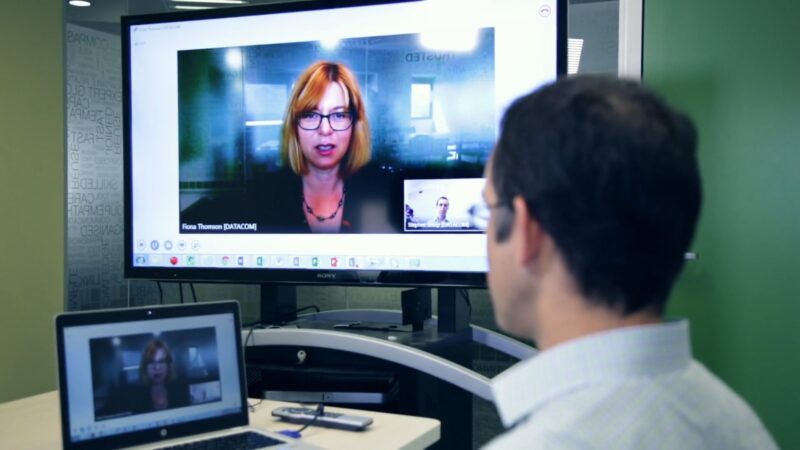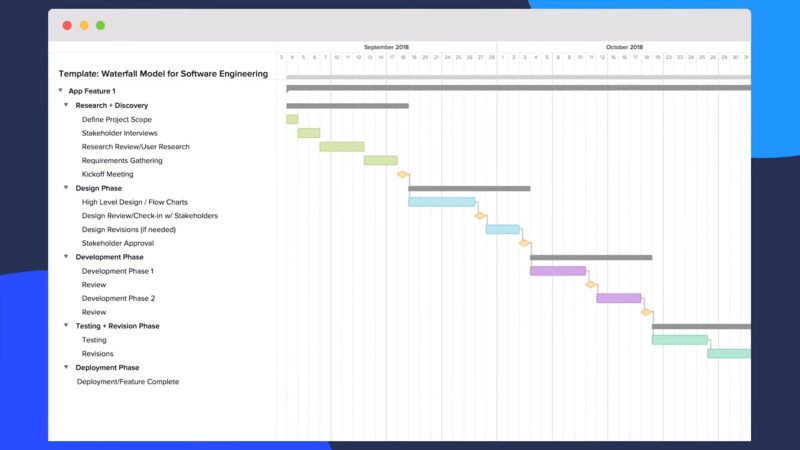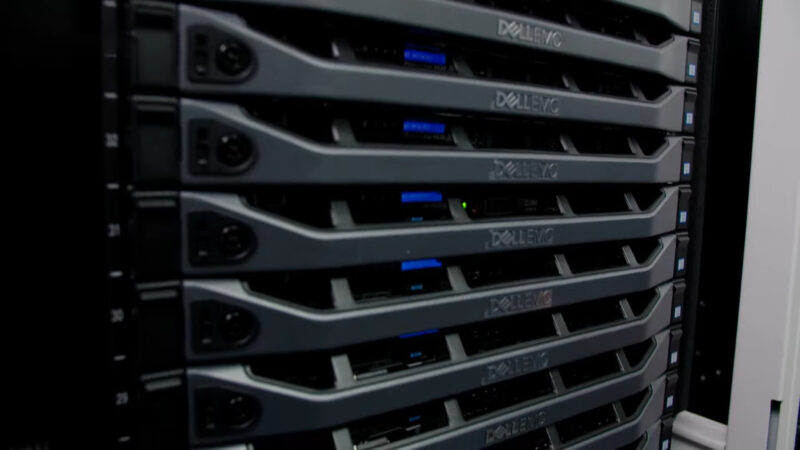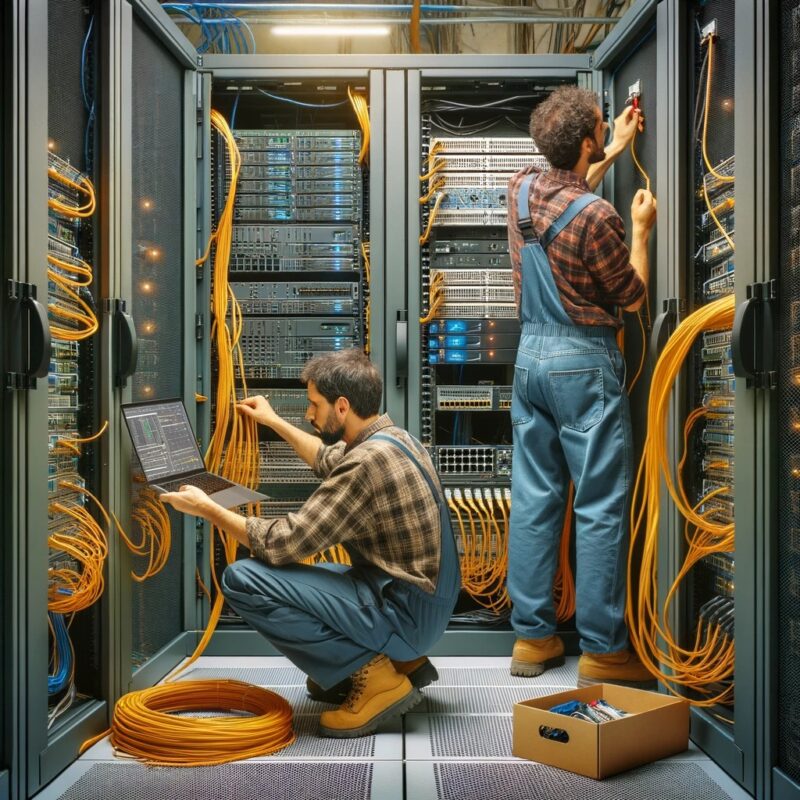As an organization grows, it eventually reaches a point where its existing data solution is no longer able to accommodate its needs. Whether it’s to increase capacity to launch new applications or gain access to a wider range of connectivity options, something triggers the company to consider moving its IT infrastructure into a new data center environment.
Their data center business plan will need to be adjusted. Many organizations turn to the benefits of colocation, such as interconnectivity, enhanced security, and scalability, to level up their IT infrastructure. Once it decides that a data center relocation is necessary, the next challenge is making it happen.
There are a number of factors a company might consider when choosing a colocation data center, but after it finds a partner capable of meeting its needs for commercial flexibility, it can begin to plan for how it will migrate its equipment into a colocation environment. Here are a few data center migration best practices to keep in mind for a successful transition.
What Is Data Center Migration?
Data center migration is the practice of moving any assets in an existing data center (whether hardware or software) to a new data center location. This could mean moving data and enterprise applications from an obsolete data center a cloud solution, transferring server blades within the same data center, or cloning a data center environment into an edge data center.
Why Would You Want to Migrate Your Data Center?
There are many reasons why an organization might want to migrate their data center assets, such as:
- To Modernize Their Tools. Migrating apps and data to a new environment that runs on the latest technology can help the organization make their systems more compatible with modern hardware and software architectures. However, this may mean abandoning a legacy system entirely in favor of a solution that is native to the cloud or new data center environment.
- To Take Advantage of Edge Computing. Any single data center can only handle so much traffic at once. Copying and migrating data and applications to a new data center on the “edge” of the network can help spread out resources so no one data center is likely to be overloaded with requests. This can also help reduce latency for application users at the edge of the network by putting a data center closer to them.
- To Create Network Resiliency. Moving a copy of the primary production environment to a new data center can help protect an organization against single points of failure in their network. This is extremely useful for ensuring business continuity in the face of disastrous events like a ransomware attack, power failure, or natural disaster at the primary data center.
- To Reduce Data Center Costs. Many organizations migrate their data center infrastructure to a third party as a way to reduce their ongoing IT costs. Instead of paying for real estate to hold the data center, constant server upgrades and maintenance, power, and other data center capital and operating expenses, they use a colocation or cloud-based data center so they can have a predictable monthly expenditure.
- To Improve Scalability. One of the major challenges of building a data center is scaling the available computing power and network bandwidth to the organization’s ever-changing needs. Investing too much wastes money on capacity not being used, but under-spending can lead to bottlenecks and poor user experience that impedes productivity. Using an outsourced data center helps organizations scale their data center capabilities up or down as needed to meet demand without wasting money on processing power they don’t need.
Who’s in Charge of a Data Center Migration?

Migrating data center assets can have a significant impact on an organization. So, there are many people in an organization who might need to have a say in how the migration is carried out (from CEOs and investors to key stakeholders throughout the organization who have to use the applications and resources being migrated).
The person in charge of a data center migration may vary from one organization to the next depending on the circumstances. For example, if migrating internally from one internally-owned data center to another, the company’s IT team or manager might be in charge of the migration process.
On the other hand, migrations to colocation data centers or to the cloud might be managed by the external managed service provider (MSP)—although they typically work with people in their customer’s organization to ensure the transition is as smooth as possible.
10 Data Center Migration Best Practices
So, how can organizations ensure that their data center migrations go smoothly? While there may always be a risk of a mishap with any major IT change, there are a few best practices to follow for a data center migration that can help reduce risks:
1. Put a project management plan in place
Any successful migration begins with a project management plan. This plan establishes a thorough and comprehensive process that will take every factor and risk into consideration before a single piece of equipment is unplugged.
Once an organization commits to a migration, it should identify a project manager and establish migration team roles to ensure that the project management plan is developed and executed in an orderly fashion.
2. Determine budget and success criteria
Gartner states that “Cost optimization will drive cloud adoption” for the foreseeable future. However, many data center migrations end up exceeding their budget, usually due to poor planning and risk assessment.
Organizations can avoid this outcome by being realistic about their application needs and expectations before migration begins. They need to make sure their new data center provider has everything in place to accommodate their IT infrastructure so there are no surprises when they move into the facility.
When the migration is completed, applications need to function as good or better than they did before the move.
3. Establish a project timeline and critical path milestones

A data center relocation is far more complicated than simply unplugging the servers and driving them to a new location. Every step needs to be completed in sequence to ensure that the equipment will function properly in the new location and that no data will be lost in the shuffle.
A setback in one area could create significant delays down the line and contribute to higher migration costs. Establishing a clear timeline with specific milestones helps to keep the migration project on schedule and focused on critical tasks.
4. Consider which, if any, data needs to be replicated
Managing data during a data center migration can be a major challenge, especially if critical applications need to be able to access that data throughout the migration process. There’s also the risk that some data could be lost or damaged during the migration, so establishing a backup strategy is critical.
A temporary “parallel” or “swing” environment may need to be set up to facilitate data availability during the move. If data needs to be replicated and transferred, additional connectivity may need to be provisioned to facilitate the transfer.
5. Identify who will handle equipment removal and transport

Moving computing equipment isn’t as simple as unplugging a server and loading it into a truck. If not deinstalled and transported properly, hardware components can be seriously damaged by electrostatic discharge, exposure to magnetic fields, and physical abuse.
A third-party contractor who specializes in equipment migration can help ensure that all IT hardware arrives at the new location in the best possible condition, allowing their customers to enjoy the benefits of colocation without having to replace equipment.
6. Verify equipment needs at the new site
Moving into a new IT environment is a major shift for an organization’s data center business plan. Equipment needs that have long been taken for granted may require special accommodations when moved to a new location.
The migration team should make sure that the physical configurations of all equipment are in alignment with the provider’s infrastructure. If additional components need to be deployed for a successful installation, it’s better to secure them long before the hardware arrives at the new facility.
7. Make sure equipment is thoroughly cataloged

While it should go without saying that every piece of equipment needs to be documented and accounted for, thorough cataloging should go beyond a simple hardware checklist. That means not just documenting which servers will be moved, but also what cables, power supplies, and fuses are involved in their operation.
Failing to account for a single fuse could create massive headaches when trying to get systems online within the new data center infrastructure.
8. Consider the provider’s equipment recommendations
Colocation data centers have seen their share of successful and troubled migrations alike over the years. Data center personnel know their infrastructure inside and out, and they also know what equipment works best.
When it comes to provisioning power strips, cabling, and other equipment, colocation providers can offer advice on what the most successful data center migrations have utilized.
9. Provision new network services in advance before disconnecting existing services

Internet connectivity and cloud providers often take several weeks to implement new network services for their customers. The last thing a company wants is to move into a new colocation environment only to discover that their network won’t be up and running for several days.
While this may involve paying for parallel services, the cost is often worthwhile if it avoids unnecessary downtime and facilitates a seamless data center relocation. The migration budget and timetable should account for when services are provisioned and disconnected.
10. Don’t make assumptions
No aspect of a data center migration should be taken for granted. Making assumptions can result in miscommunication and delays at best and costly downtime or damaged equipment at worst.
Organizations should work with their new data center provider every step of the way to confirm migration details and identify potential pitfalls. Function and service availability for both long-haul and local connectivity, for instance, should be verified long before a single piece of equipment is moved.
Once hardware is on-site, all power ports and configurations should be tested prior to installation. After so much planning and budgeting, nothing should be taken to chance.
Making the move to a new data center environment is a challenging task for an organization, but one that can help it to grow and become more successful in the future. When the time comes for a data center relocation, companies need to approach the task with a detail-oriented process that assesses risk appropriately and sets realistic expectations for the move.
With a good project management plan in place and a comprehensive data center migration checklist, they can set the wheels in motion to migrate with confidence.
Key Takeaways
What Is a Data Center Migration?
A data center migration is the act of moving data center assets (hardware or software) from one location to another.
Why Do Organization Migrate Data Center Assets?
There are many reasons to migrate resources from one data center to another, such as to modernize IT solutions, increase capacity, create redundancy, or to save money on IT.
Who Is in Charge of a Migration?
The answer to this varies from one migration to the next. Oftentimes, it is an IT expert in the organization or someone working for their managed service provider.
How Can I Ensure My Data Center Migration Is Successful?
While there is always an element of risk in any process that makes a major change to a company’s IT, risk can be reduced by following some data center migration best practices, such as:
- Putting a project management plan in place;
- Determining the budget and success criteria ahead of time;
- Establishing a project timeline and critical-path milestones;
- Considering which, if any, data needs to be replicated;
- Identifying who will handle equipment removal and transportation (if needed);
- Verifying what equipment needs to be moved (if any);
- Thoroughly cataloguing new equipment;
- Considering service provider recommendations;
- Provisioning new network services in advance of the migration; and
- Not making assumptions!
Final Words
Data center migration is a monumental task that requires meticulous planning, coordination, and execution. While the process may seem daunting, the benefits of modernizing infrastructure, enhancing scalability, and optimizing costs make it a worthwhile endeavor for many organizations.
By adhering to best practices and collaborating closely with experienced partners, businesses can ensure a smooth transition to their new data center environment, setting the stage for future growth and technological advancements.
Related Posts:
- 6 Best Practices for Data Center Disaster Recovery
- How to Transition Into Auckland's Tech Industry: A…
- The Best 8 Practices for Effective Mobile App Testing
- Best Practices for Securing Your PC and Avoiding Malware
- Agile Development ─ The Benefits and Best Practices…
- How Jewelry Plays a Role in Holistic Wellness…








